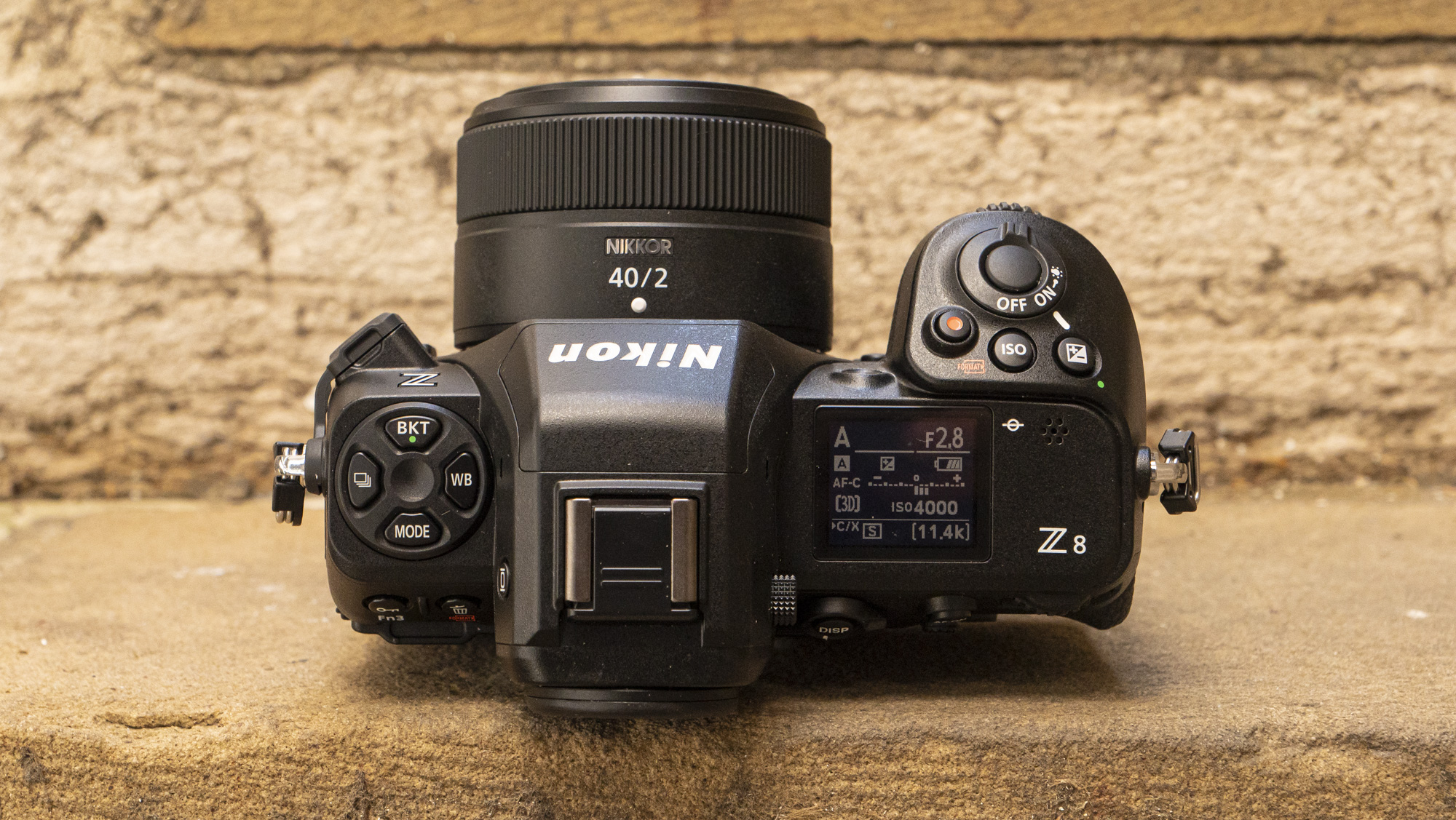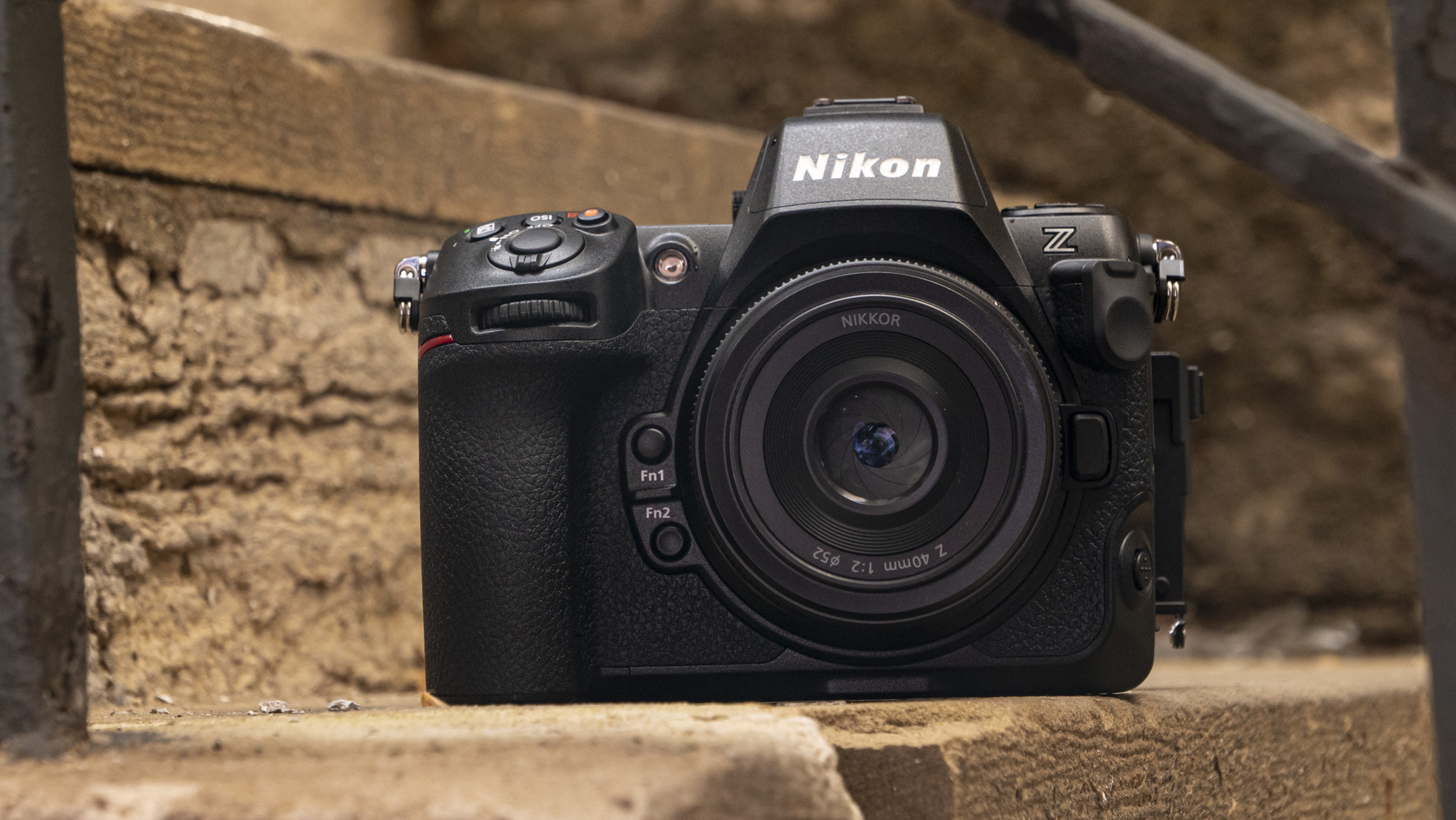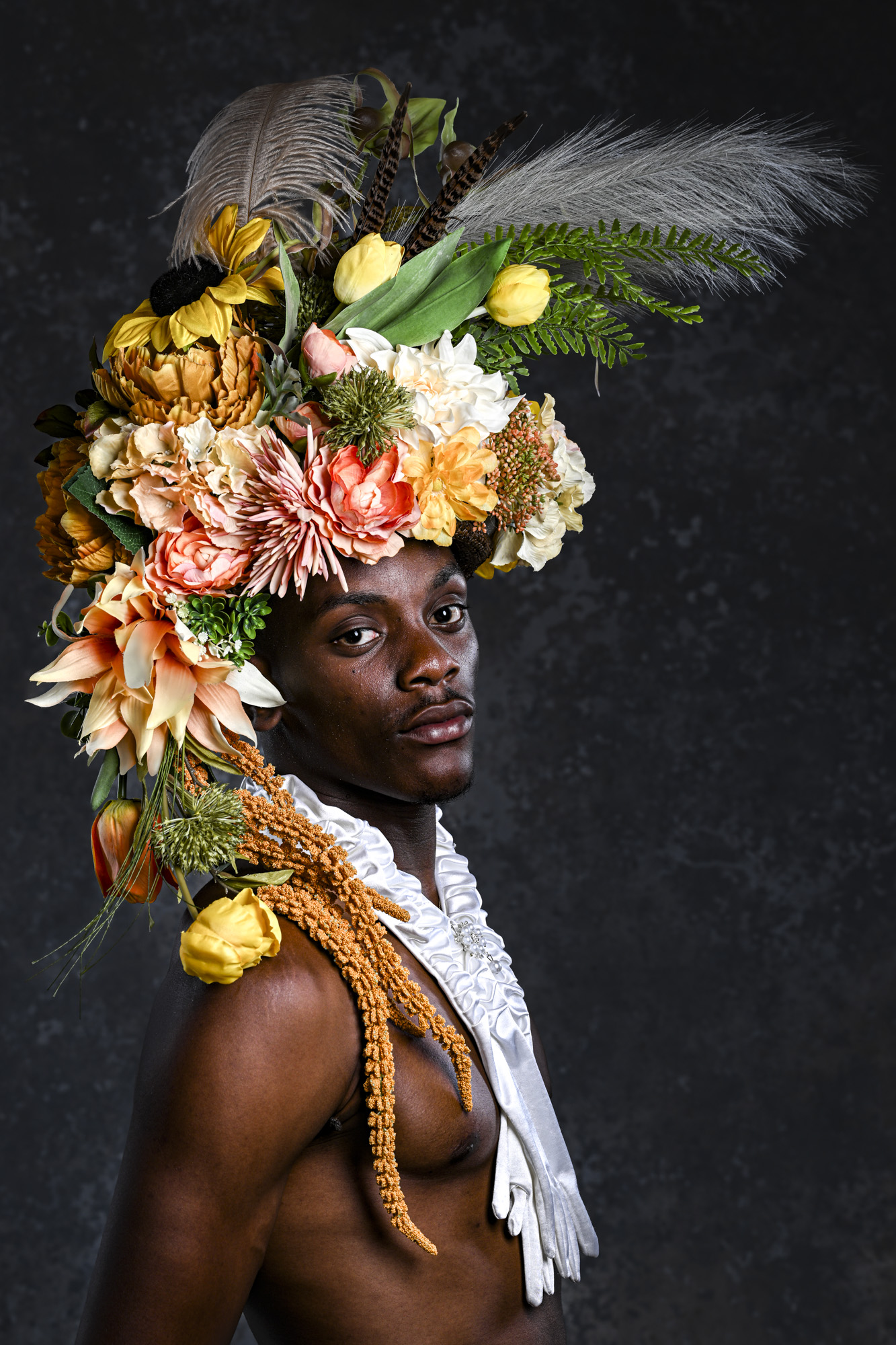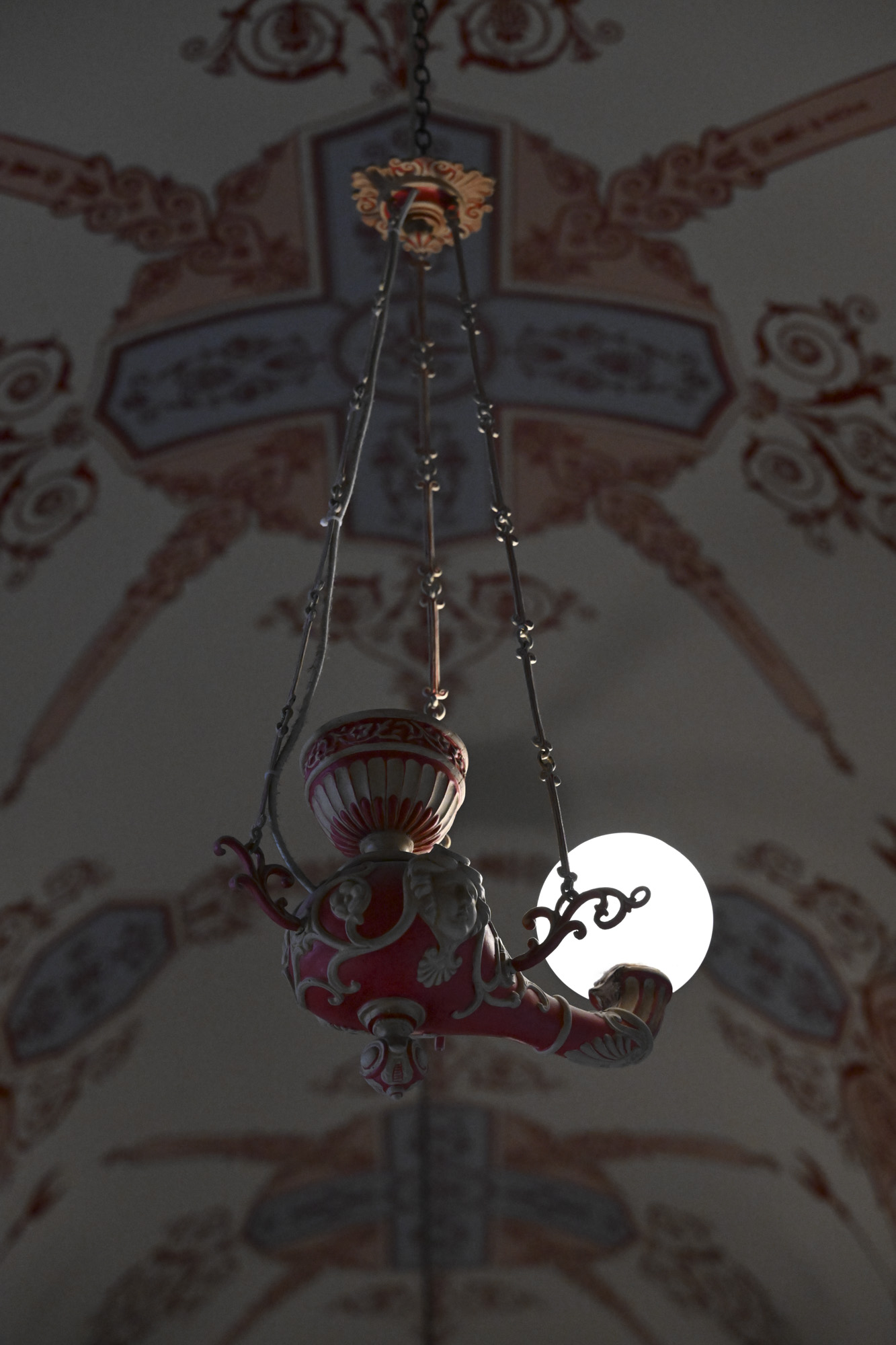
When I first heard about the Nikon Z8 at a press briefing, I didn't experience the degree of excitement I'd expected for what will likely be one of the best cameras money can buy. Perhaps that was because the full-frame mirrorless camera could be summarized by Nikon in a few words: “It’s a baby Z9”. In short, this is a camera that I’ve used a lot before – and our camera of the year 2022 – but smaller (and cheaper).
Despite my muted reaction, the Z8 immediately made more sense than the Z9, and I was confident that my feelings about the Z8 would change after I'd spent some time actually using it. Days later, I got the chance to do just that, getting hands-on with a full production sample at the Europe launch of the Z8, which took place during Photo London 2023.
I shot 45.7MP stills and 8K videos in multiple scenarios, from studio portraits to street dancers, and this hands-on review is based on my experience. So am I more excited about the Z8 having used it? Read on to find out.

Nikon Z8: release date and price
- $3,999 / £3,999 / AU$6,999 body-only
- Available from May 25
The Nikon Z8 was announced on May 10 2023, and will land on store shelves on May 25, priced at $3,999 / £3,999 / AU$6,999 body-only. There’s stiff competition at this price point, and we've pitted the Z8 against the Canon EOS R5 and the Sony A7R V to see which mirrorless camera comes out on top.
Arriving alongside the camera is a new optional accessory – the Power Battery Pack MB-N12, which operates as a vertical grip and holds two additional EN-EL15 batteries. We don't have a list price for the MB-N12 yet, but we can use the Nikon Z7 II’s MB-N11 battery pack as a rough guide, and that costs $359 / £359 / AU$649.
Given that the Z8 is more than 25% cheaper than the Z9, you could pick it up instead of the Z9, along with the MB-N12 pack filled with EN-EL15 batteries, and also get a mid-range Z-mount prime lens like the Nikkor Z 85mm f/1.8 S, and you’ll still likely have a little change left over.
Nikon Z8: design
- Mirrorless evolution of the Nikon D850 DSLR
- Weather-sealed 910g body
- Blackout-free viewfinder and versatile 4-axis touchscreen
Most of what’s new in the Z8 is in regards to its design. Features, performance, and image and video quality are virtually the same as from its bigger sibling, the Nikon Z9.
The key difference between the two camera is size. DSLR users can think of the Z8 as the mirrorless evolution of the Nikon D850, and if we think in the same terms the Z9 is the modern-day Nikon D6.
Weighing 910g, the Z8 is 30% lighter than the Z9, which is a significant 1,340g, although still heavier than its rivals the Canon EOS R5 and Sony A7R V, plus the Nikon Z7 II.
I’m used to the Z8 form factor, and I love how all of my hand sits within its grip; with smaller cameras like the A7R V, my little finger slides off the bottom. So while it’s lighter than the Z9, the Z8 is still a decent chunk of camera, and feels good with lenses of all shapes and sizes.
Its smaller size compared to the Z9 impacts the user experience in a few ways, and battery life is one. The Z9 has much better battery life, where the Z8’s is positively mediocre at 340 shots, as I soon found out when rattling out hundreds of frames at the launch event. That said, there is the option to add the vertical grip with two additional EN-EL15 batteries to extend battery life, and the batteries in the grip can be hot-swapped for continuous power.






Charging on-the-go via USB-C is also possible – the Z8 actually has two USB-C ports, one for power and the other for connectivity, which can be used simultaneously. I can’t think of another camera that has two USB-C ports.
Nikon says the weather-sealing on the Z8 is to the same standard as the D850's, and it sure is a rugged camera. It also has some of the flagship design features that I love, especially for working in low light, like a top LCD and illuminated buttons.
The 3.69m-dot viewfinder might not match the resolution of the Sony A7R V's, but it's a large and bright display with zero blackout, and as such is a pleasure to use, even for high-speed continuous shooting. The 3.2-inch, 4-axis tilt-touchscreen works well for shooting at all angles in both portrait and landscape formats, although it's no good for selfie shooting as it doesn't flip out and rotate – but then again this isn't a vlogging camera.
In addition to its user-friendly design for photography, the Z8 boasts filmmaking tools such as waveform, focus peaking, zebra, linear focus and a red display border when recording. Nikon is also more generous than most when it comes to improving the performance and functionality of its cameras post-launch through firmware updates. The Z9 has had two major firmware updates, and is a better camera in 2023 than it was at launch a year ago, and the Z8 picks up where the Z9 currently is, with the upgrades added to the Z9 included in the Z8 out of the box.
Nikon Z8: features and performance
- 20fps for up to 1,000 raw images
- Aircraft option added to subject-tracking AF
- Autofocus effective to -9EV
In terms of features and performance, the Z8 is almost a complete match for its bigger sibling. The cameras feature the same-generation EXPEED 7 processor and stacked 45.7MP full-frame sensor with in-body image stabilization, and both exclude the mechanical viewfinder altogether – a trailblazing design choice by Nikon last year.
Continuous shooting at 20fps for up to 1,000 raw images comes with continuous auto exposure (AE) and subject-tracking autofocus (AF). Aircraft subject detection is new to the Z8 in addition to people, animals and vehicles, though I haven’t had the chance to try this new AF mode yet.
The max continuous shooting rate is bumped to 30fps in JPEG only, and even 120fps if you can live with an 11MP output. 20fps was plenty fast enough for me to capture precise moments of dancers at the launch event, and overall the Z8’s performance will satisfy the most demanding pro wildlife and sports photographers.






Nikon was keen to point out that it’s “evolving from JPEG to HEIF format” – the former having long being the industry standard compressed image file format. For now, the Z8 includes both formats, in addition to raw. In video terms, the difference between HEIF and JPEG is like the difference between 10-bit video and 8-bit video – HEIF offers one billion more colors than JPEG, and suits those who want greater dynamic range in their pictures.
The Z8 is a true hybrid camera, too, offering 8K / 60p and 4K / 120p video with Nikon’s N-raw and ProRes raw internal recording as an option, with 12-bit color. Record time extends up to 90 minutes in 8K and over two hours in 4K with no overheating. I’ve not pushed the camera that hard yet, but record times are one area where the Z9 should have the advantage, given that its physically larger size and surface area make it better able to disperse heat.
Nikon Z8: image and video quality
- 45.7MP stacked sensor
- 8K / 60p video up to 90 minutes recording
- In-body image stabilization
Like the Z9, the Z8 is an extremely capable hybrid camera, delivering superb photo and video quality. It doesn’t match the 61MP resolution of the Sony A7R V – a change that was hoped for by some – but its 45.7MP resolution is plenty enough for most, and positively impacts its performance for high-speed shooting – with fewer pixels, the Z8 is twice as quick as the A7R V, and that’s a trade I’d be willing to make as an all-rounder photographer.
During the launch event I was able to shoot studio portraits with the Nikkor Z MC 105mm f/2.8 VR S lens, and detail is pin-sharp, as you can see in the example below. I also grabbed some photos of dancers using the Nikkor Z 40mm f/2 S and Nikkor 24-70mm f/2.8 VR S lenses.
I’m keen to use the HEIF format more extensively, and compare it to JPEG, in my full review of the Z8. In the meantime, you can learn more about the image and video quality that you can expect from the camera in my in-depth Z9 review.




Nikon Z8 early verdict
There may be little in the Nikon Z8 that we haven’t already seen in the Z9, but that doesn’t stop it from being one of the most capable cameras available today. In fact, it’s all the more impressive that Nikon has been able to squeeze almost all of the features and performance from its flagship Z9 into a significantly smaller body. Nikon’s track record with firmware updates is also reassuring, and I expect the Z8 to continue improving post-launch.
Having used both cameras now – albeit briefly in the case of the Z8 – I’m already in the Z8 camp. Nikon does say there are photographers who will always want the larger form factor of a camera like the Z9, but the Z9 is positively gargantuan, and to me the Z8 makes the most sense for most serious photographers, especially as it can be bulked out with the vertical grip.
I'm looking forward to spending more time testing the Nikon Z8 more fully, and I'll share my findings in my upcoming full review.







